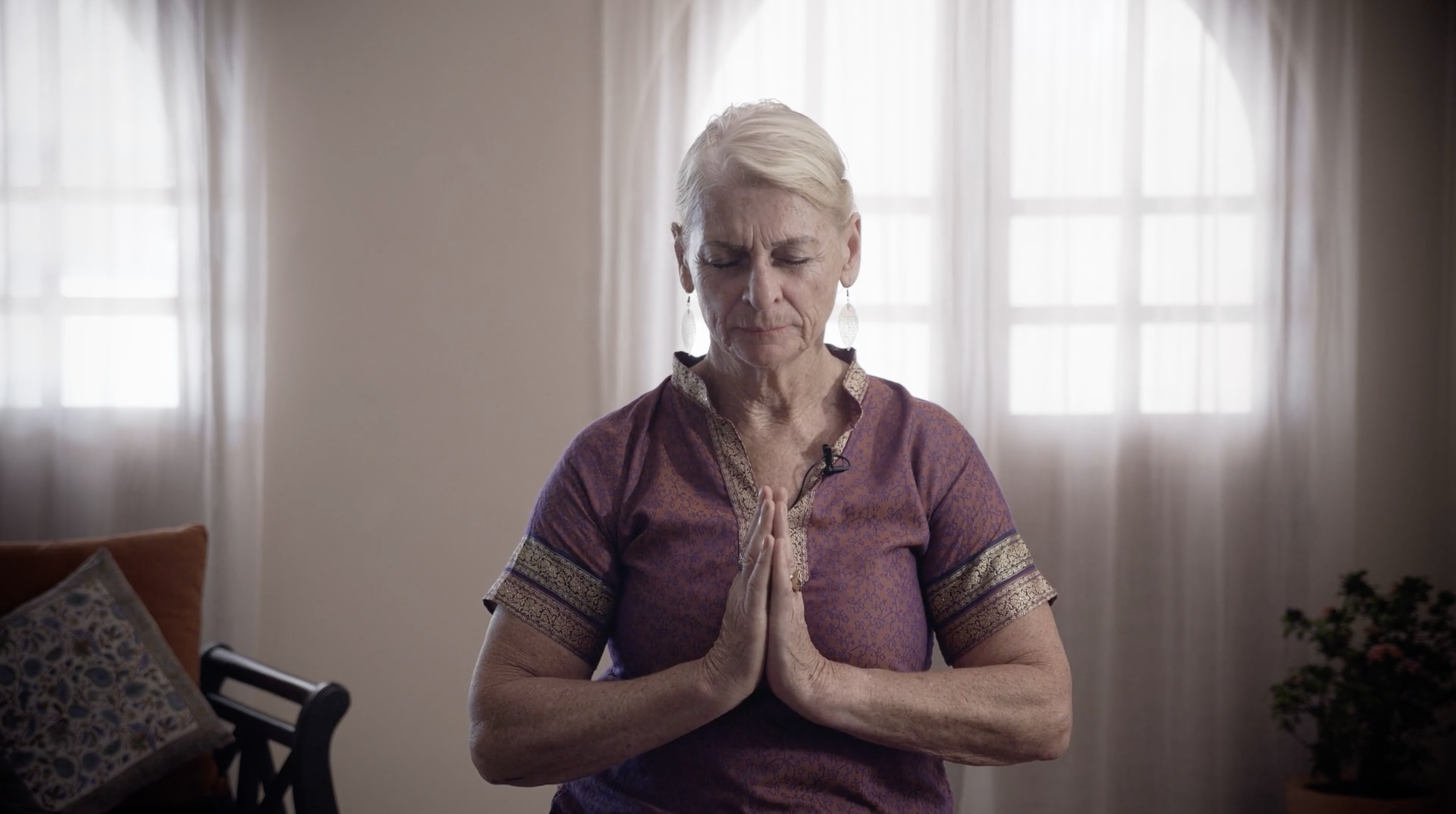
Chanting Mantras
Mantra practice is a central aspect of traditional Yoga. The foundational, primary sounds are called seed vibrations in the most ancient Indian language of Sanskrit. In the Hindu and related Dharmic traditions that use mantra meditation as a regular part of yoga practice, there is a mantra for everything; for every illness, disease and every challenge. We don’t have to understand the words of the mantra and we don’t have to have a good singing voice to practice mantras. It’s not about singing in the usual sense, but rather the vibration of the sounds. By enunciating the Sanskrit words and vibrating a certain combination of sounds, the tongue taps certain points along the roof of our mouths, much like acupressure points, sending signals to the hypothalamus in the brain.
Physical Benefits
Mantra sound and vibrations are directed to the hypothalamus region of the brain which in effect regulates the chemical activity streaming into all parts of our body. The vibrations and sounds give the following physical benefits:
- balances the nervous system;
- can help ease chronic stress and tension;
- helps with depression and anxiety;
- balances the endocrine system;
- creates mental calm and reduces the negative effects of mental overload;
- assists the regulation of hormone production thereby balancing moods and giving an overall sense of well-being;
- helps reduce heart beat and respiration lowering blood pressure;
- releases melatonin;
- synchronises the left and right side of the brain.
Physiological Benefits
Vibrations and a combination of sounds activate our chakras and nadis, located at the major nerve plexuses in the torso, which are connected to the nervous and endocrine systems. The stimulation of these points through chants activates our other subtle energy centres such as the five Koshas and five Vayus, cleansing the channels and balancing our pranic energy.
In the yoga tradition, Himalaya Yoga Valley teachers chant specific mantras for opening and closing your yoga class. The following are a couple of mantras most commonly used by our teachers – you can use in your personal practice or join in with our yoga teachers when they chant before and at the finish of the class. The English translations of the Sanskrit verses are below.
Opening Mantras
- Om Gurur Brahmaa Gurur Vishnu
Gurur Devo Maheswaraha
Guruh saaksaat param Bramha
Tasmai sri gurave namaha
MEANING: To that beautiful and benevolent Guru who is Brahma, the creator, Vishnu, the Maintainer, and Siva, the Great Lord through whom all things return to their origin. To that Guru who is the direct experience of Brahman, Salutations.
- Om Sarve bhavantu sukhinaha
Sarve santu niraamayaah
Sarve bhadrani pasyantu
Maa kaschid dukha bhaag bhavet
MEANING: Om – may all be happy,
May all be free from disabilities,
May all look to the good of others,
May none suffer from sorrow.
Closing Mantras
- Om Asato maa sadgamaya
Tamaso maa jyotirgamaya
Mrityor maa amritamgamaya
Om shaanti shaanti shaanti hi
MEANING: Let us be led from the unreal to the Real;
From darkness to the Light; From mortality to Immortality.
Om, Peace, peace, peace.
- Om Poornamadah poorna midam
Poornaat poorna mudachyate
Poornasya poorna maadaaya
Poorna mevaa vashishyate
Om shaanti shaanti shaanti hi
MEANING: Om – That is whole. This is the whole.
From the whole the whole becomes manifest.
From the whole when the whole is negated.
What remains is again the whole.
Om, Peace, Peace, Peace
You can listed to Maeve’s explanation of chants here: